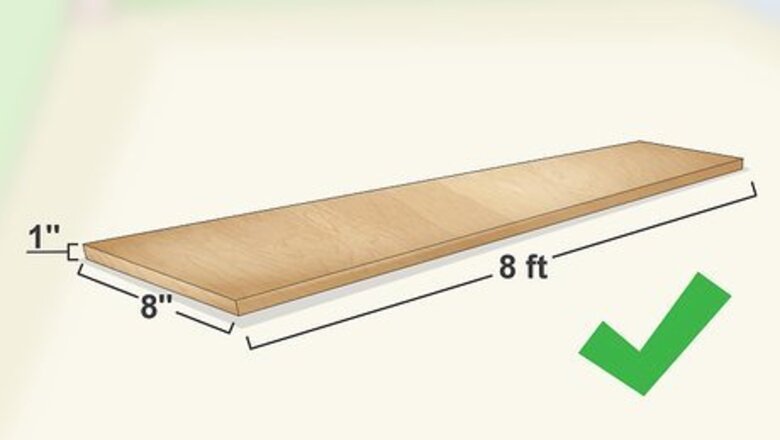
views
Acquiring and Preparing the Materials
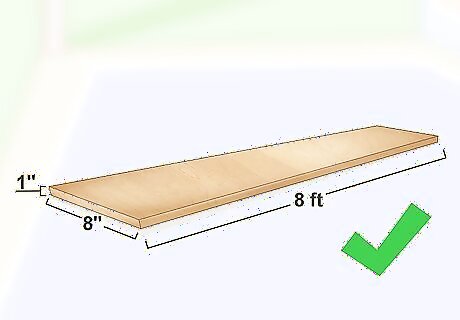
Purchase untreated wood that is 1 by 8 inches (2.5 cm × 20.3 cm) by 8 feet (240 cm) long. Purchasing untreated and unpainted wood, such as cedar or cypress, will ensure that the birdhouse isn’t worn or damaged by weather. Buy this wood from a local hardware store and request these specific lengths and dimensions. The 1x8in measurement refers to the width and thickness of the wood, and the 8 feet (2.4 m) measurement refers to the wood’s length. Woods like cedar or cypress don’t rot and will last longer than other kinds. If you do not have a saw at home, the hardware store employees can cut the wood to 8 feet (2.4 m) for you. Untreated wood will also allow you to paint the birdhouse different colors later on.
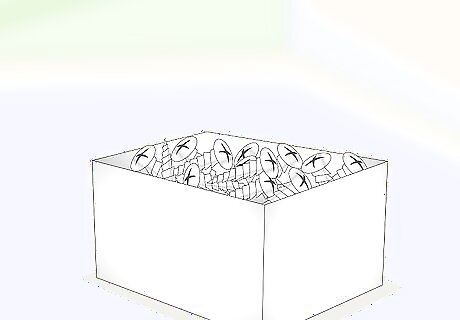
Buy a box of galvanized screws. Instead of using nails, which will loosen and make your birdcage fragile over time, galvanized screws will tightly seal your birdhouse. Purchase galvanized screws from your local hardware store or online. Galvanized screws will need to be set with a drill, so consider purchasing one from the hardware store if you do not own one already.
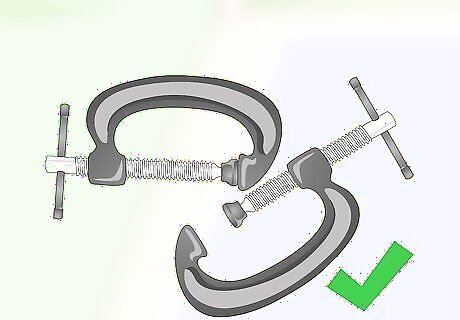
Purchase C-clamps from a hardware store. C-clamps will be used to secure the birdhouse while glue dries and while drilling the galvanized screws. These clamps are tighten with knobs that allow you to adjust the strength and pressure of the clamps. Ask a hardware store employee for help if you are having trouble identifying the C-clamps.
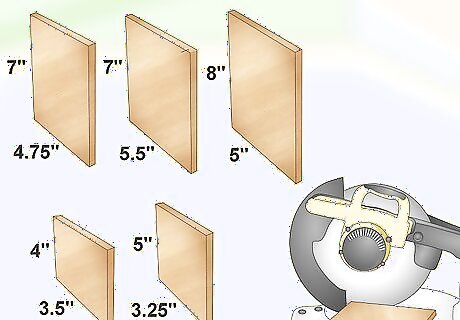
Cut the 1x8inch piece of wood into different parts. Using a bandsaw, cut your large piece of wood into the parts listed below. You can use a regular saw and a ruler to cut the wood, or pay someone at the hardware store or lumberyard to cut the wood into the specific dimensions for you. At the end of the cutting, you should have seven different pieces of wood. The different cuts you will need are: Two pieces that are 4 by 3.5 inches (10.2 by 8.9 cm) for the side walls. A single piece that is 5 by 3.25 inches (12.7 by 8.3 cm) for the floor. One piece that is 4.75 by 7 inches (12.1 by 17.8 cm) for the right side of the roof. A piece that is 5.5 by 7 inches (14 by 18 cm) for the left side of the roof. Two separate pieces that are 5 by 8 inches (13 by 20 cm) for the front and back walls.
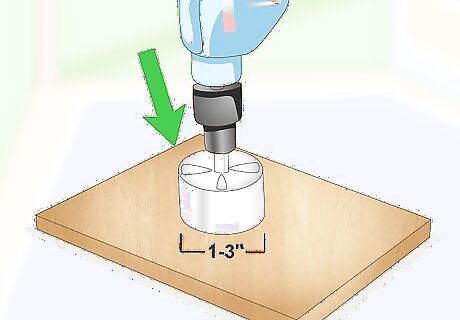
Drill a hole that is 1 to 3 inches (2.5 to 7.6 cm) in circumference. The front wall is one of the 5x8in pieces. This will be the place where the birds will enter the birdhouse. Depending on the size of the birds in your area, drill a hole that is between 1 and 3 inches (2.5 and 7.6 cm). Drill the hole into the top two thirds of the piece of wood. Use a drill press to cut the hole, or have it professionally drilled at a hardware store.
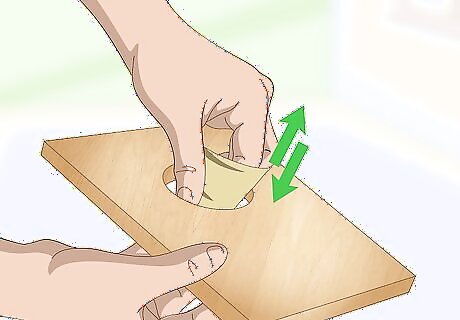
Sand the edges of the newly drilled hole. Once the hole is drilled, jagged shards of wood will be protruding out of the edges, making it dangerous for the bird to enter. Use a fine grit sandpaper, such as #220, to soften these edges. Go over the edges on both sides of the wood until they feel smooth to the touch. The size of the hole that is drilled will determine what species of birds can and will enter.
Assembling the Birdhouse
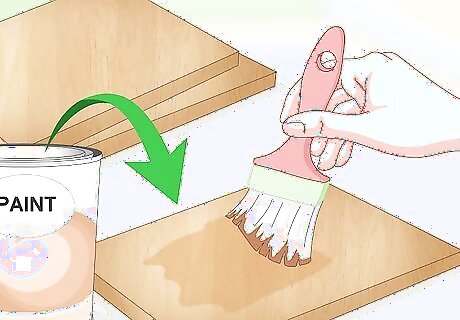
Paint or stain the wood before you assemble the pieces. Painting, staining, or any kind of finishing work should be done to each individual piece of wood before putting them together. Pick up some stain or natural looking paint from the hardware store. Apply the stain or paint with a paint brush and let it dry for as long as necessary. Bright, flashy colors may scare off the birds and keep them from enjoying your birdhouse, so pick paints with neutral and natural tones. Do not paint the inside of the birdhouse, as birds will peck at the inside and may digest the paint.
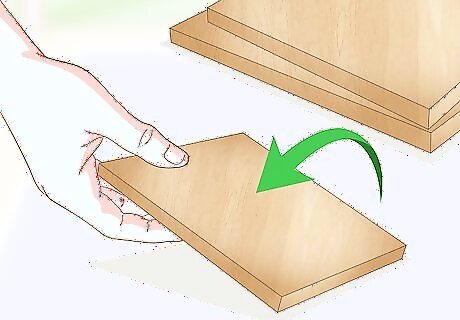
Place the 5x3.25in floor piece on a flat surface. Whether you prefer to work on a workbench or on the ground, finding a flat surface is important. Lay out your tools on the surface so that they are easily reachable, and keep the other pieces of wood nearby. Using a workbench or table will allow you to build the birdhouse without bending down or sitting on the floor.
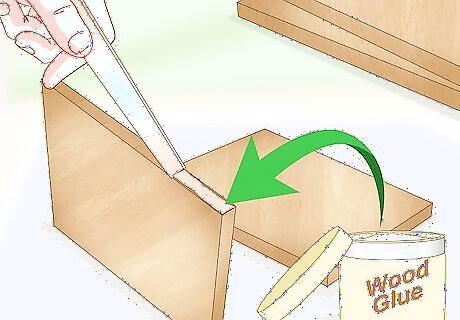
Spread wood glue on the connecting edges of the birdhouse walls. With a wooden stick or paint brush, spread the wood glue on the outward facing parts of the walls and connect them. Go one piece at a time until you have the four birdhouse walls glued together. Position the rough part of the wood on the inside of the birdhouse if the wood is untreated on one side.
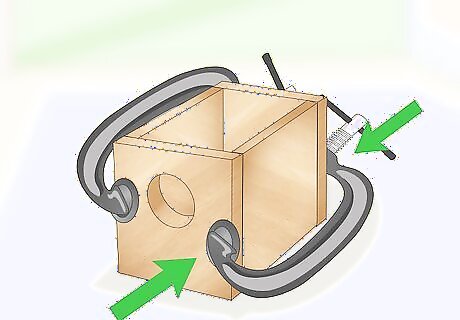
Clamp the four walls of the birdhouse together and leave them to dry. Attach the clamps to each corner, putting pressure on the connecting edges. After attaching the clamps to all four walls, the wood glue will need to cure for at least thirty minutes. Clamp the pieces of wood firmly, but be cautious not to damage the wood or crack the walls by screwing them too tightly. The clamps put pressure on the wood and ensure that the glue sets properly.
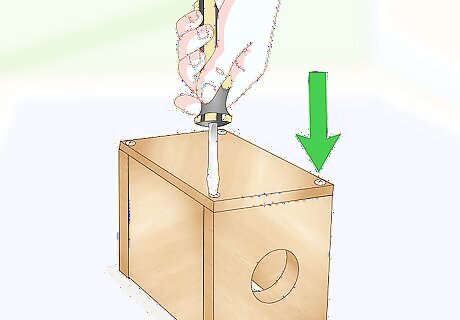
Attach the floor piece with screws. It is important to attach the bottom panel with screws so that you can clean the birdhouse when necessary. With small galvanized screws and a drill, set the floor panel even with the four walls and screw it in. Do not glue the floor panel, as it will be difficult to access the inside of the birdhouse if you do.
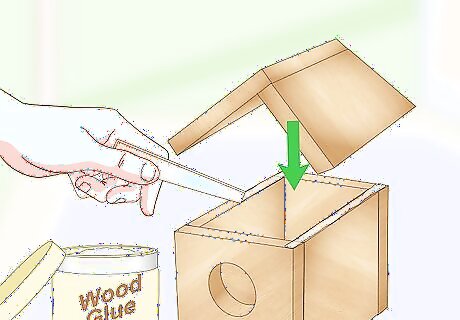
Glue the wooden roof pieces to the four walls at a 90 degree angle. The roof panels should overlap, with the left side (the longer piece) sitting higher than the right. Slope the roof panels, connecting the two pieces with wood glue and clamping them for thirty minutes prior to attaching them to the four walls. Attach the clamps tightly so that they put pressure on the connecting edges of the roof. The angled slope of the roof will keep water or snow from accumulating on top of the birdhouse.
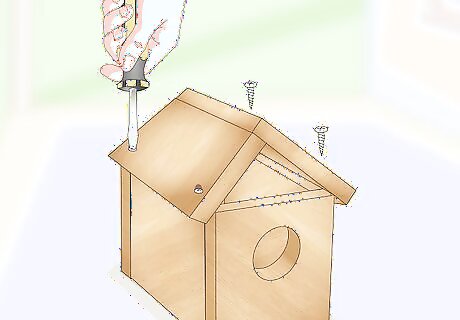
Screw the roof panels into the walls. After the glue has dried, use the galvanized screws to set the roof panels into the front and back walls. Align your screws with the outer edges of the birdhouse walls carefully. Drill through the roof panels and into the outer edges of the front and back walls until the roof panels feel firm and secure.
Finding the Right Place for the Birdhouse
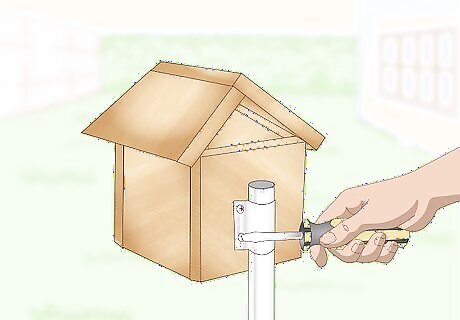
Mount the birdhouse to a pole or to the side of a building. Hanging your birdhouse from a branch or from your home is not recommended, as birds do not like when birdhouses sway in the wind. If there are poles or natural structures in the area, mount the birdhouse to one of them. Mounting it to an existing metal pole, or drilling it into the side of a barn or wood building are both great ways to set up a birdhouse. Mounting the birdhouse to an existing metal pole also protects the birdhouse from predators.
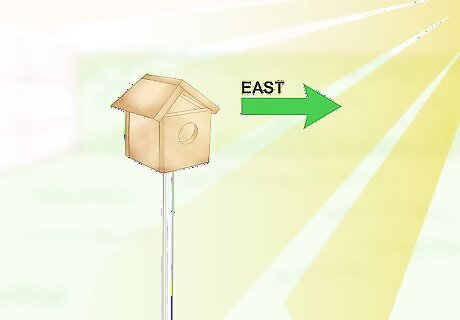
Face the birdhouse east. Although this is not a necessity, birds are more attracted to birdhouses that receive natural sunlight in the mornings. Facing the birdhouse toward the east will also keep it from getting too hot in the afternoon, especially during the summer months or in hotter climates.
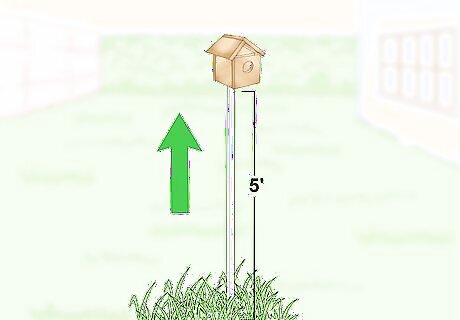
Keep the birdhouse at least 5 feet (1.5 m) off the ground. Mounting the birdhouse at this level will make it easier for you to clean it out when necessary, and will also keep it away from most predators. Do not hang or mount your birdhouse lower than 5 feet (1.5 m), but feel free to mount it as high as 12 feet (3.7 m). The height range depends on the bird, so keep track of which birds are able to reach your birdhouse and make adjustments if need be.
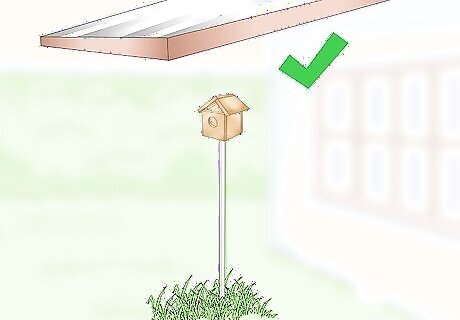
Hang or set the birdhouse under an awning, roof overhang, or eaves. Keeping your birdhouse safe from weather will ensure that it lasts and that the birds are protected from rain or snow while they visit. Whether you hang the birdhouse or set it on a pole, keep it under some kind of existing overhang to prevent it from being damaged.

















Comments
0 comment